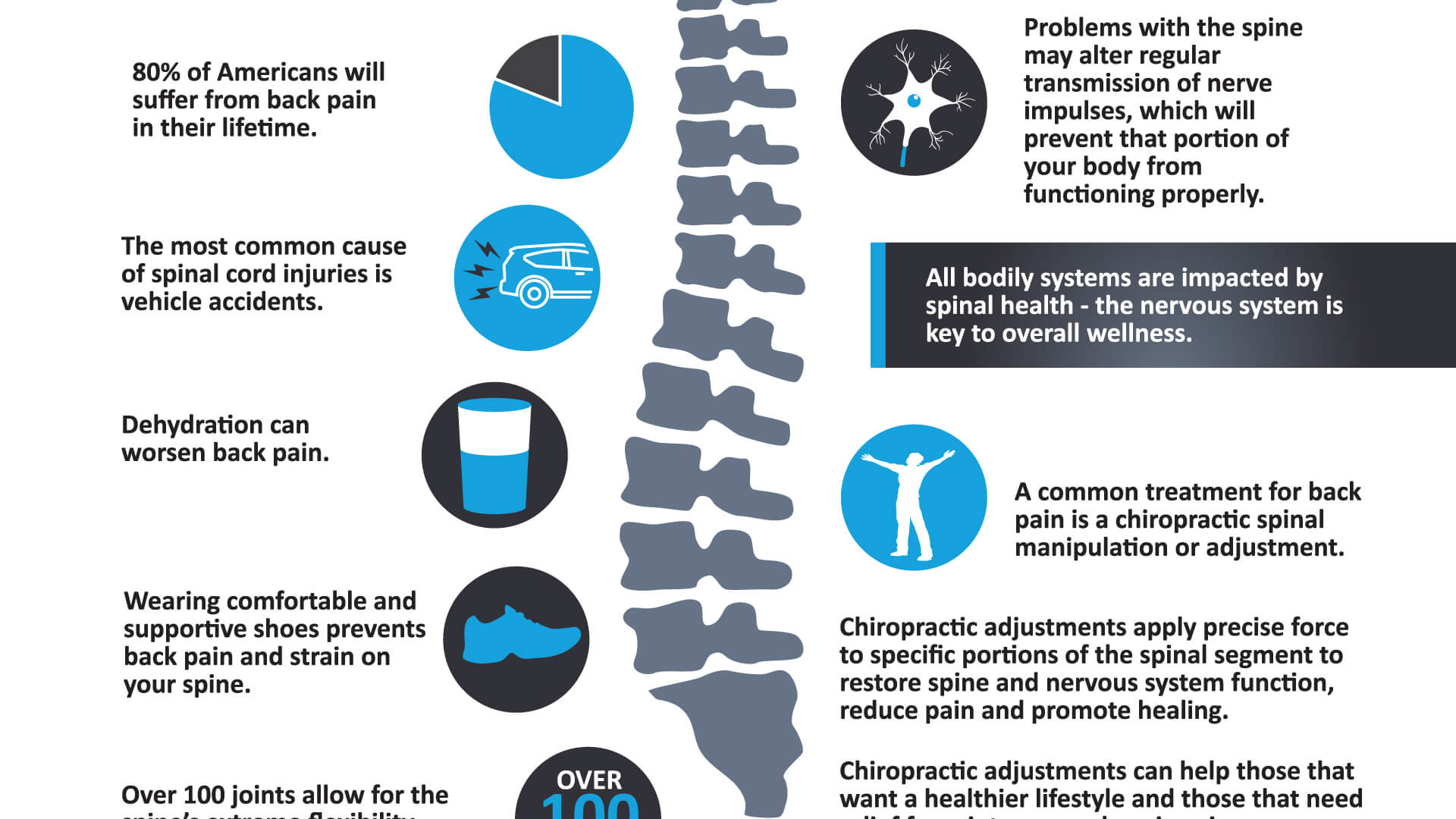The Link In Between Posture And Back Pain: Ways To Make Certain Correct Placement All Day Long
The Link In Between Posture And Back Pain: Ways To Make Certain Correct Placement All Day Long
Blog Article
Write-Up By-Kragh Fraser
Keeping proper posture isn't almost sitting up straight; it has to do with aligning your body in a manner that supports your back and lowers the risk of neck and back pain. The way you sit, stand, and relocate throughout the day can dramatically impact your spinal health and wellness. Yet exactly how precisely can you make certain excellent alignment constantly, even throughout active days full of different tasks? Allow's dive deeper right into the refined yet impactful changes you can make to your day-to-day routine to maintain your back happy and healthy.
Significance of Correct Pose
Correct posture is critical in preserving a healthy back and preventing pain. When you sit or stand with excellent stance, your spinal column remains in positioning, reducing strain on your muscles, ligaments, and joints. This placement allows the body to disperse weight uniformly, avoiding too much stress and anxiety on specific areas that can lead to discomfort and pain. By maintaining your back properly lined up, you can also enhance your breathing and food digestion, as slouching can compress body organs and limit their functionality.
Additionally, keeping good pose can enhance your general look and self-esteem. When you stand tall with your shoulders back and head held high, you show self-confidence and appear even more approachable. Good pose can likewise make you really feel a lot more energized and sharp, as it promotes appropriate blood flow and permits your muscles to function efficiently.
Integrating appropriate stance into your daily regimen, whether sitting at a desk, strolling, or exercising, is crucial for stopping pain in the back and promoting overall wellness. Remember, a tiny change in how you hold on your own can make a significant difference in just how you feel and function throughout the day.
Common Postural Mistakes
When it involves maintaining good pose, numerous individuals unwittingly make common mistakes that can add to pain in the back and pain. One of the most common errors is slouching or hunching over while sitting or standing. This setting puts extreme stress on the spine and can bring about muscular tissue discrepancies and pain over time.
Another common mistake is overarching the lower back, which can flatten the natural contour of the spinal column and trigger pain. In addition, crossing legs while resting may really feel comfy, yet it can create an inequality in the hips and pelvis, bring about postural concerns.
Making use of a pillow that's also soft or too firm while sleeping can additionally influence your positioning and contribute to neck and back pain. Lastly, frequently craning your neck to look at displays or adjusting your setting regularly can stress the neck and shoulders. Bearing in mind these typical postural blunders can aid you preserve far better alignment and minimize the threat of pain in the back.
Tips for Correcting Positioning
To boost your positioning and decrease neck and back pain, it's necessary to concentrate on making small adjustments throughout your everyday routine. Beginning by bearing in mind your posture. When resting, ensure your feet are level on the flooring, your back is straight, and your shoulders are relaxed. Avoid slouching or leaning to one side. Use ergonomic chairs or paddings to sustain your reduced back.
When standing, distribute your weight evenly on both feet, keep your knees somewhat curved, and embed your pelvis. Involve your core muscular tissues to sustain your back. Take breaks to stretch and walk if you have a sedentary job. Integrate exercises that enhance your core and back muscle mass, such as slabs or bridges.
While resting, use a pillow that sustains the all-natural contour of your neck to maintain correct spinal alignment. Stay clear of sleeping on your stomach, as it can stress your neck and back. By bearing in https://www.medicalnewstoday.com/articles/can-spinal-problems-cause-digestive-issues and making small changes, you can progressively remedy your alignment and minimize back pain.
https://howlongtoseeachiropractor16150.loginblogin.com/37487250/browse-the-globe-of-cushion-options-for-neck-pain-relief-with-expert-insights-and-tips-learn-exactly-how-to-make-your-evenings-extra-relaxed
Remember, keeping excellent position is vital to stop back pain and promoting spinal health and wellness. By being mindful of your alignment, distributing weight equally, and engaging your core muscles, you can decrease pressure on your back and decrease the risk of pain and injury. Integrate ergonomic support, take regular breaks to stretch, and enhance your core and back muscles to preserve correct positioning throughout the day. Your back will certainly thanks for it!
